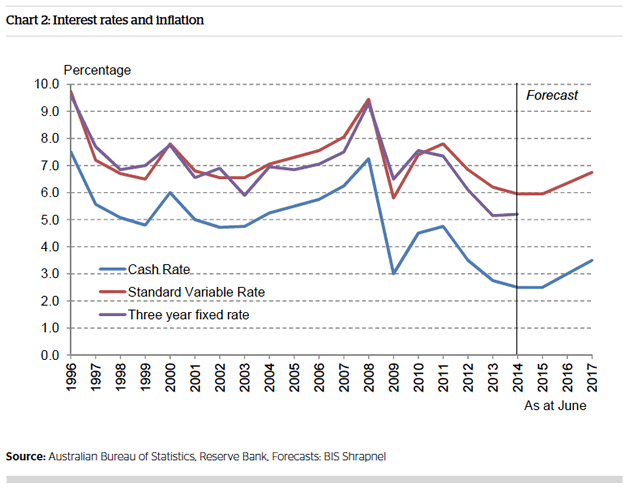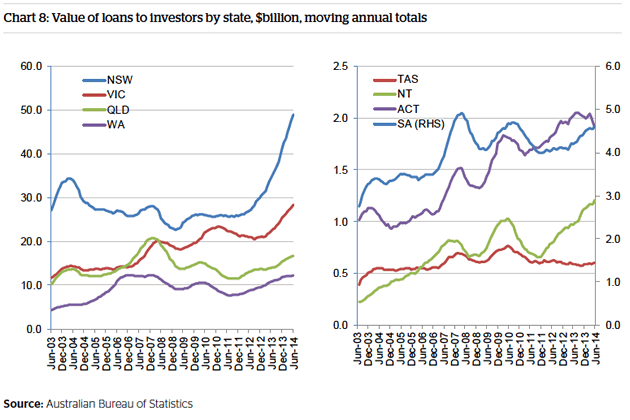Released yesterday, the Australian Housing Outlook 2014–2017, prepared by BIS Shrapnel for QBE, has found that successive rate rises will take the standard variable rate to a peak of 6.8 per cent by the end of 2016.
“This is expected to bring about the necessary slowdown in the economy in order to alleviate inflationary pressure,” the report said.
Chart 2, below, shows the predicted rise in the official cash rate and corresponding standard variable rate from the end of 2015.
Meanwhile, the low interest rate environment has narrowed the gap between rental income and mortgage outflows for investors, while recent price rises have encouraged the expectation of further capital growth, the report found.
“With low returns being offered by other investment classes such as fixed interest, current conditions have provided an attractive environment for investors,” it said.
According to the report, the value of finance for residential investment has been steadily rising from just under 40 per cent of total residential finance in the year to June 2011, to 45.2 per cent in the year to June 2014.
The monthly share of investor loans has consistently been in the 45 per cent to 50 per cent range since March 2014.
Growth in investment lending has been strongest in NSW in 2013/2014, rising by 43 per cent over the previous year to $49 billion, as shown in chart 8 below.
This ended a decade-long period of subdued demand for residential investment finance in the state since 2003/2004, the report said.
Of the other states, lending for residential investment is above previous record levels in Victoria and the NT, with investor activity in WA on par with its pre-GFC levels.
Conversely, while rising in 2013/2014, the report found that lending for residential investment in Queensland and South Australia remains below pre-GFC levels.


Comments (0)